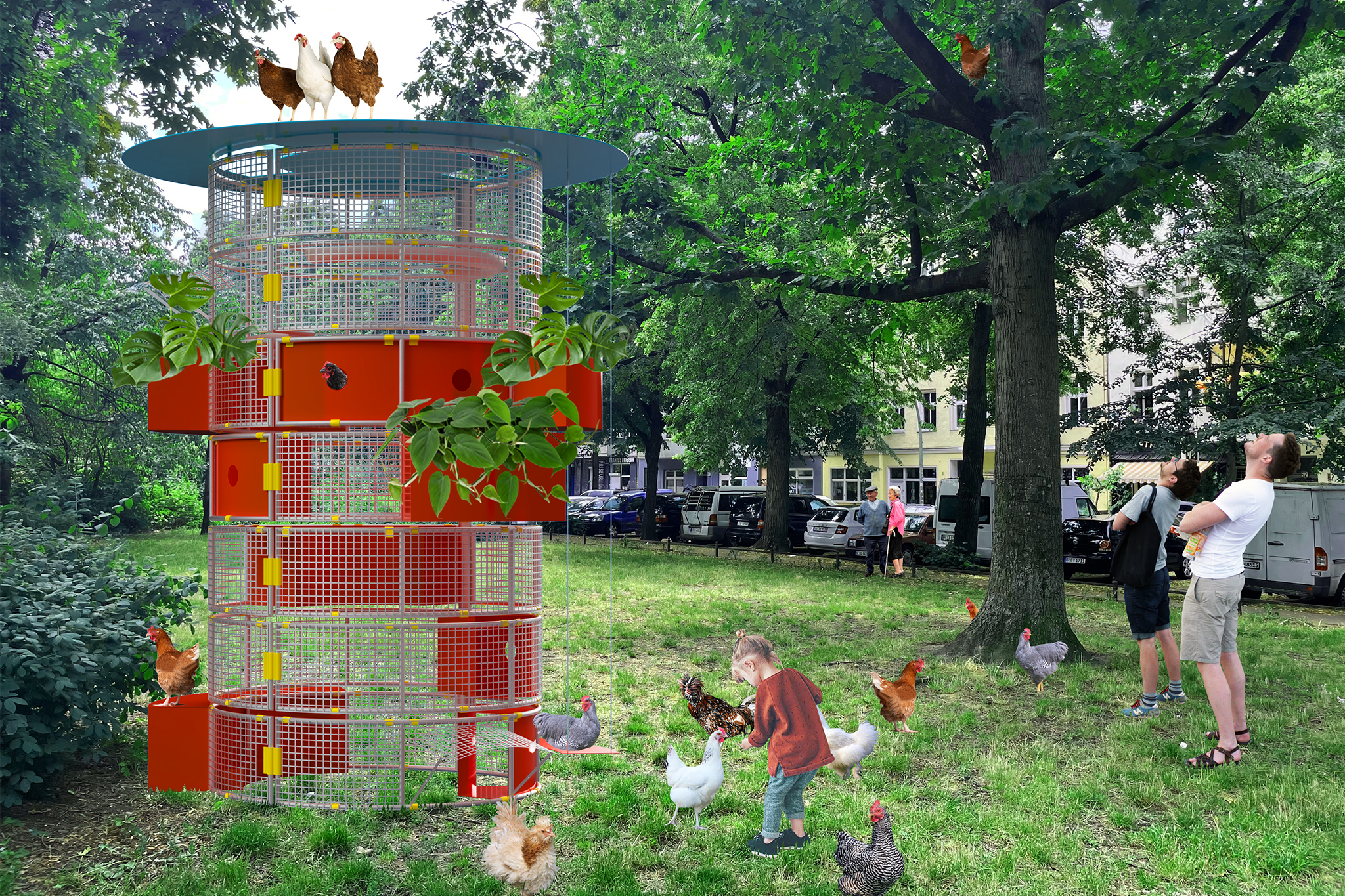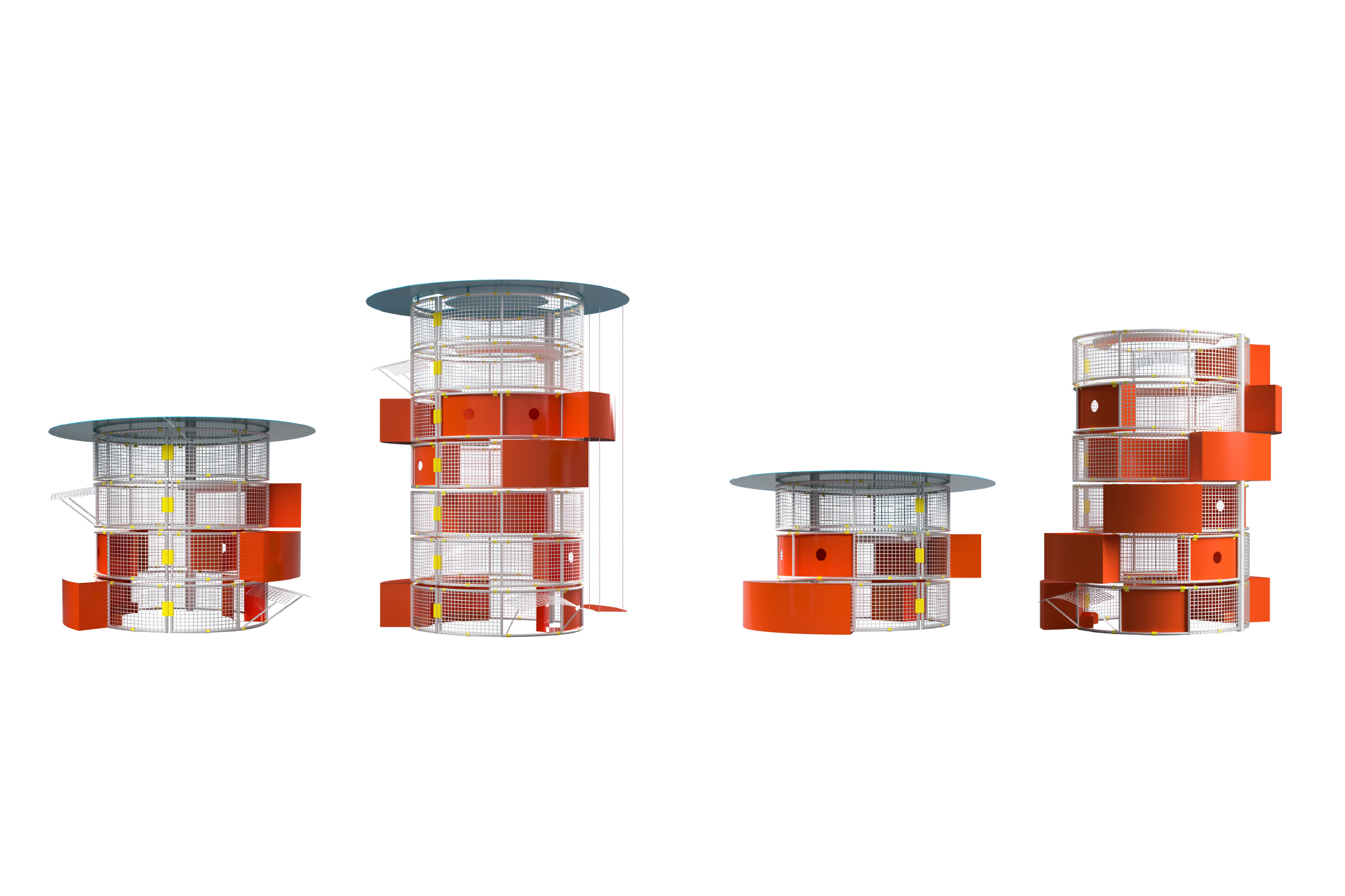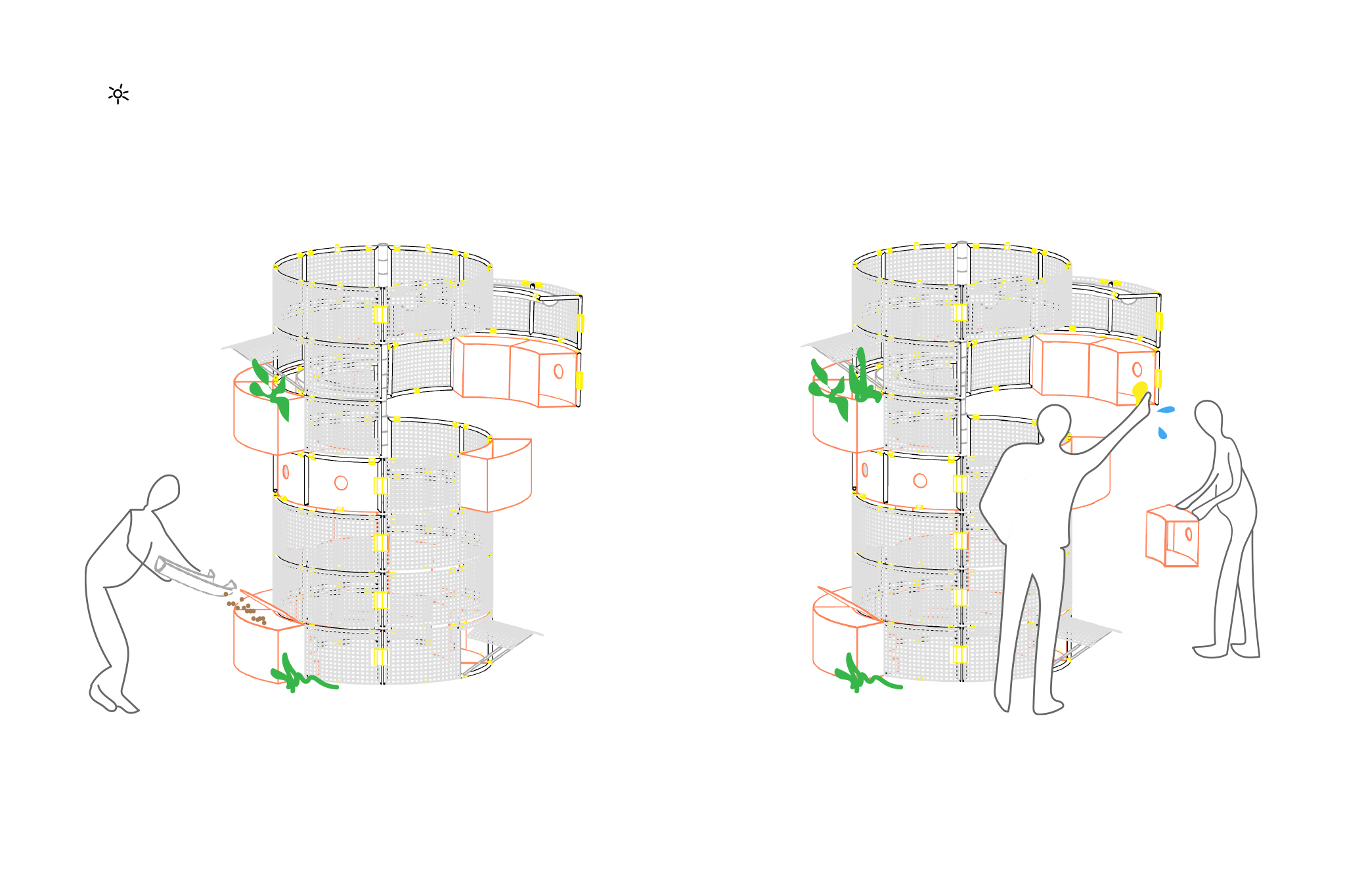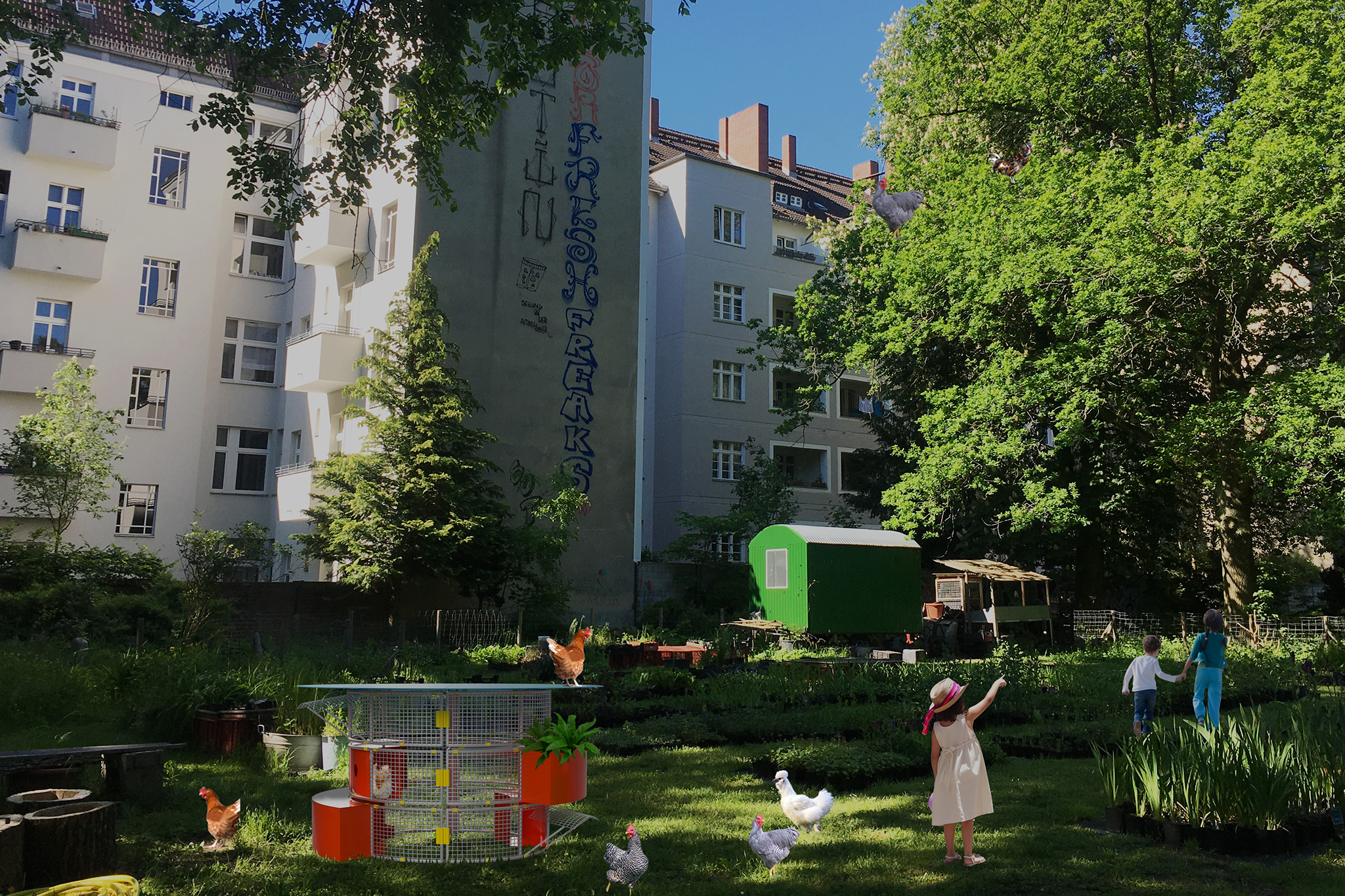City Chickens I Kim Kuhl
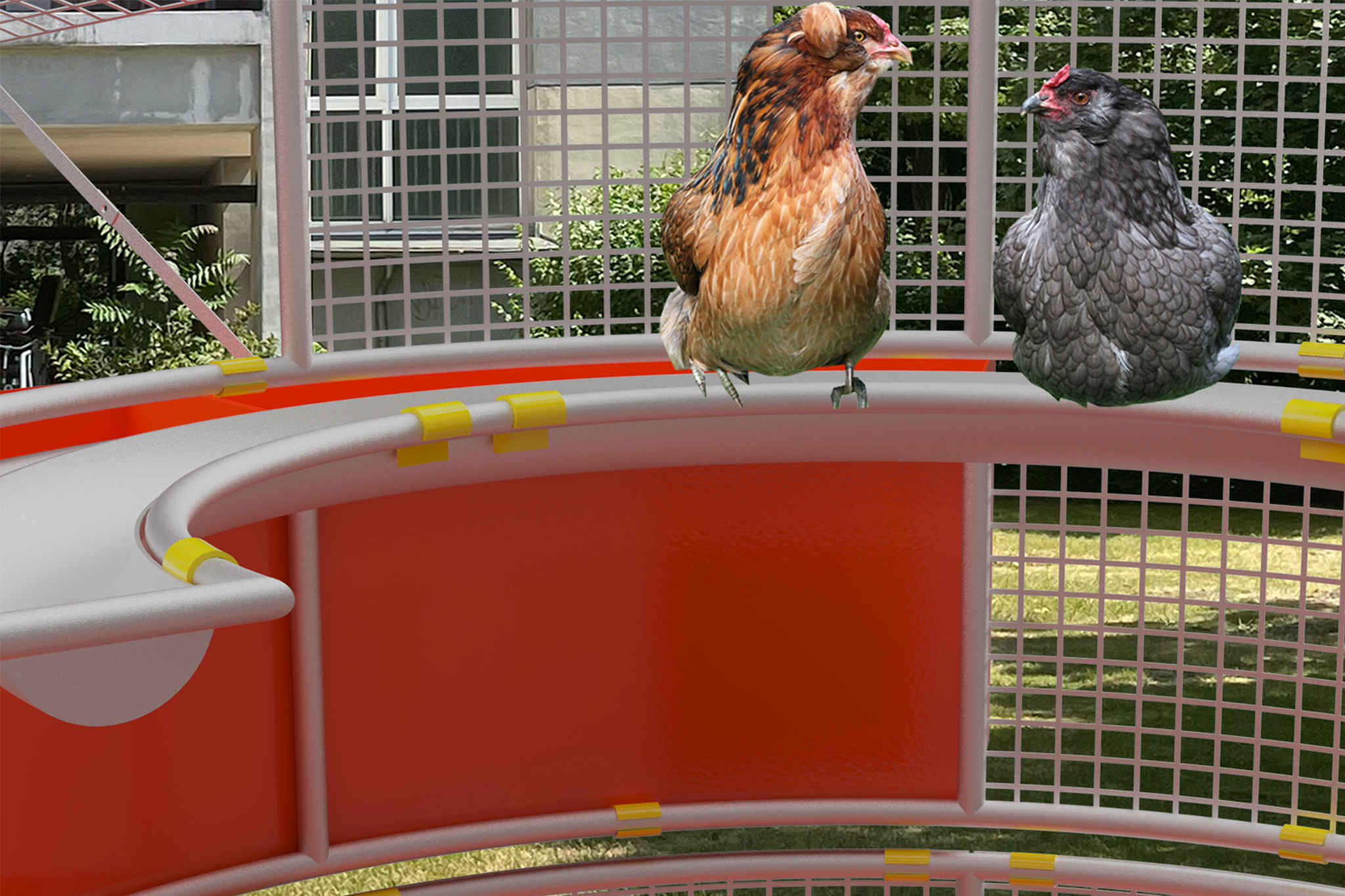
CITY CHICKENS is a reaction to anthropocene urban development. In urban space, we live in an environment that is increasingly shaped by humans for humans, with man-made environments and controlled ecosystems.
With the development of the Anthropocene city and the hygiene discourse in the 19th century, the close connection between humans and farm animals was ended, urban wild animals were considered 'degenerate' and removed from public places. Later factory farming also took place on the periphery, disguising exploitation and power structures between animals and humans.1
The natural way of life of farm animals, city dwellers today probably know mainly from the remote farm that is seen as special because it shows one of the few animal husbandries that is accessible at all. This increased distance alienates city dwellers from the animals and distorts their perception of the animals' living conditions. What role will farm animals play in an increasingly plant-based society? In this context, the project gives a proposal for the chicken:
CITY CHICKENS adds to the beauty of cohabitation of different species in cities by reviving the coexistence of humans and farm animals in urban areas. Giving chickens after years of exploitation, in an increasingly plant-based world, a new habitat in the city, this housing system moves away from the typical enclosure to housing as a place of protection where wild chickens move in and out freely and live in companionship with humans in urban space.
The scalable housing system consists of a semi-circular scaffolding module, of which two can be stacked mirrored to each other to any height. The resulting scaffolding tower is individually equipped with various functions and grid panels. From small, simple housings in one's own backyard to large, overflowing 'villas' in the city park, various housings are integrated functionally and socially into small and large, private and public urban green spaces while they are free-standing or enclosed around a tree. Being 'chicken-centered' in design, the individual functions are derived from everyday needs and popular activities of the chickens - like nest boxes, roosting perches and feeders or a roof terrace, a swing and hiding boxes – and are clicked onto the scaffolding. For the city dwellers, the outside of the housing offers plantboxes and peepholes for egg gathering. By opening the scaffolding modules, the function boxes can be unclicked and the housing can be easily cleaned by the responsible community.
The responsibility for a housing is taken over by organized companionships between the chickens and the neighborhood or institution communities such as from old people's homes and kindergardens. Thus, the chickens have a social potential as community builders. Through participation, shared care and the interaction with the animals, not only is a community generated or strengthened, but also a coexistence of humans and farm animals in urban space is revived and an empathy for the chicken is learned.
The questions of interspecies solidarity and of the democratisation of urban space arising with CITY CHICKENS, sensitise future urban societies to the nature and needs of other species and, in the longer term, should lead to a more equal animal-human relationship. At the same time, urban space is opened up and a significant role is given to non-human life forms, making our space visible as a habitat for different species.
1 Exhibition 'Cohabitation' by ARCH+: 'Anthropocity', 2021, online: archplus.net/en/cohabitation/#article-28228.
